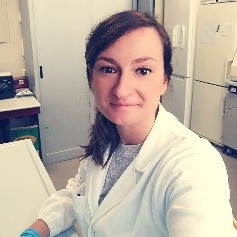Oxidative Stress and Nrf2-Mediated Cellular Inflammation
A special issue of Antioxidants (ISSN 2076-3921).
Deadline for manuscript submissions: 30 July 2024 | Viewed by 809
Special Issue Editors
Interests: mesenchymal stem cell differentiation; biomaterials; tissue regeneration; hyaluronic acid; histology
Special Issues, Collections and Topics in MDPI journals
Interests: inflammation; hyaluronic acid; biomaterials; oxidative stress; tendons
Special Issues, Collections and Topics in MDPI journals
Special Issue Information
Dear Colleagues,
Nuclear factor erythroid 2‐related factor 2 (NRF2) is a master transcriptional regulator of genes whose products defend our cells from toxic and oxidative insults. NRF2 can influence several cellular functions as it is located at the intersection of crucial signaling pathways in the maintenance of the intracellular redox balance, including cellular metabolism, proteostasis, mitochondrial function and inflammation. Oxidative stress boosts NRF2 activation and links NRF2 with the activation of inflammasomes. Failure in NRF2 activation or its degradation leads to increased inflammation and the secretion of pro-inflammatory cytokines. Exaggerated inflammation negatively evolves into apoptosis/pyroptosis.
In recent decades, a plethora of literature has focused on the investigation of NRF2 modulation for therapeutic purposes, which requires accurate knowledge of the cell context and the specific timeframe both of NRF2 activation and inhibition. This Special Issue offers an overview on the most recent findings regarding the involvement of NRF2 in the modulation of cellular inflammation at a molecular level.
Prof. Dr. Amelia Cataldi
Dr. Marialucia Gallorini
Guest Editors
Manuscript Submission Information
Manuscripts should be submitted online at www.mdpi.com by registering and logging in to this website. Once you are registered, click here to go to the submission form. Manuscripts can be submitted until the deadline. All submissions that pass pre-check are peer-reviewed. Accepted papers will be published continuously in the journal (as soon as accepted) and will be listed together on the special issue website. Research articles, review articles as well as short communications are invited. For planned papers, a title and short abstract (about 100 words) can be sent to the Editorial Office for announcement on this website.
Submitted manuscripts should not have been published previously, nor be under consideration for publication elsewhere (except conference proceedings papers). All manuscripts are thoroughly refereed through a single-blind peer-review process. A guide for authors and other relevant information for submission of manuscripts is available on the Instructions for Authors page. Antioxidants is an international peer-reviewed open access monthly journal published by MDPI.
Please visit the Instructions for Authors page before submitting a manuscript. The Article Processing Charge (APC) for publication in this open access journal is 2900 CHF (Swiss Francs). Submitted papers should be well formatted and use good English. Authors may use MDPI's English editing service prior to publication or during author revisions.
Keywords
- Nrf2
- oxidative stress
- cell signaling
- inflammation







